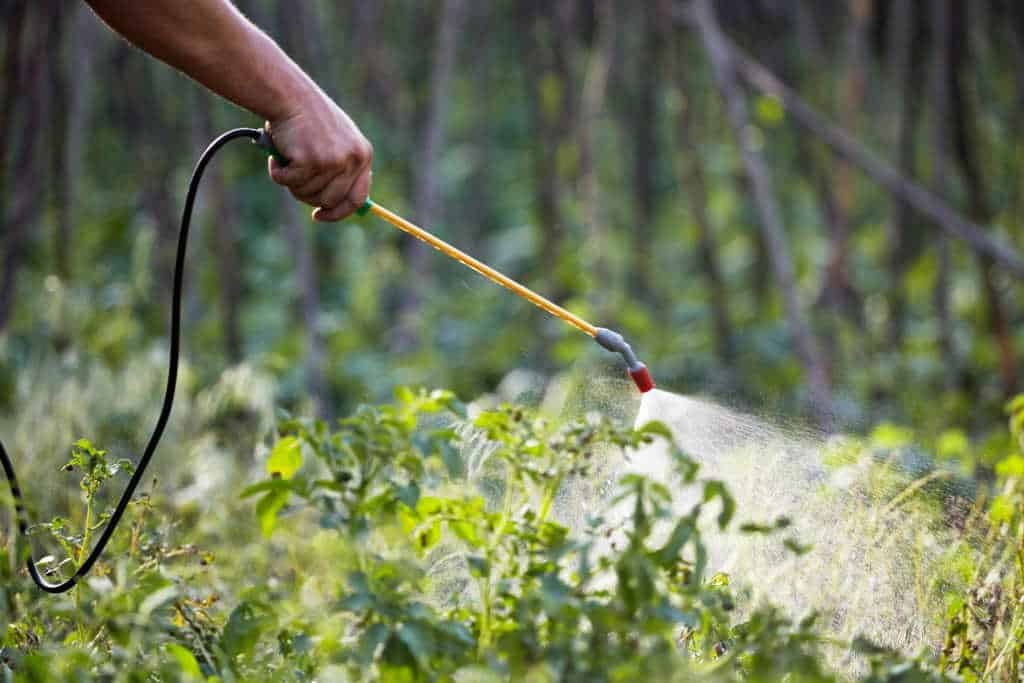Back to: AGRICULTURAL SCIENCE JSS 1
Welcome to class!
In today’s class, we will be talking about Method of Weed and Pest Control. Enjoy the class!
Method of Weed and Pest Control

A weed is a plant considered undesirable in a particular situation, that is a plant in the wrong place.
In order words, a weed is an unwanted plant that grows in an unwanted place.
Effect of weed on the crop plant
- Weed reduces the value of pasture
- Weed reduces the market value of the crop
- Some weed harbour pest that attacks crops
- Some weed is poisonous and causes stomach upset in livestock
- Reduces crop yield.
Agents of weed dispersal
- Wind
- Man, and animals
- Water
Methods of controlling weed
- Burning
- Weeding
- Hand pulling
- Grazing animal
- Use of parasite
- Mulching
- Use of selective herbicides
Uses of weed
Even if the weeds are unwanted, they still have few uses for mankind
- Weed serves as food for man and soil organism
- Some weed has medical value, and are used in traditional medicines. E.g. Imperata cylindrical (spear grass)
- Weed helps protect the soil from erosion and help to recycle soil nutrients.
Methods of controlling weeds
Preventative controls:
Prevention is the most essential aspect of weed management, as the saying goes, prevention is better than cure. By avoiding and not giving the weeds a place to grow is the best of all. Once a noxious weed infestation becomes established, any increase in size and density creates increasingly more expensive management efforts. Awareness of weed seed sources and plant identification is a must.
- Weed seed can be spread from neighbouring properties, adjacent road rights-of-way and trails. Direct sources are often livestock, manure, seed, hay, vehicles and equipment.
- The disturbed ground is most vulnerable to weed invasion.
- Early detection and rapid response save time and money. Aggressive management action on small, newly established infestations can result in eradication. “an ounce of prevention is worth a pound of cure.”
Cultural controls:
Cultural control, the establishment of competitive and desired vegetation, prevents or slows down an invasion by weedy species and is a key component of successful weed management. Weeds are typically opportunistic and readily invade disturbed sites. Impacts from road construction, intensive livestock grazing, densely populated prairie dog colonies and other disturbances that damage or remove desirable and competitive vegetation create sites for noxious weed invasion. Controlling weeds on such sites can be futile without vegetative restoration, as weeds will readily re-invade the disturbed area.
Chemical controls:
Herbicide application can provide the most effective and time-efficient method of managing weeds. Numerous herbicides are available that provide effective weed control and are selective so that grasses are not injured. Along with herbicide use, user responsibility and compliance with all product label requirements for herbicide handling, use and clean-up are necessary. Always read the label and keep in mind the label is legally binding.
Biological controls:
The goal of biological control is not eradication but the use of living agents to suppress vigour and spread of weeds. Such agents can be insects, bacteria, fungi or grazing animals, such as sheep, goats, cattle or horses. Grazing produces results similar to mowing. Biological control is most commonly thought of as “insect bio-control”.
Mechanical control:
consists of methods that kill or suppress weeds through physical disruption. Such methods include pulling, digging, disking, ploughing and mowing. The success of various mechanical control methods is dependent on the life cycle of the target weed species.
Pest Control
It is the regulation or management of a species defined as a pest, a member of the animal kingdom that impacts adversely on human activities. The human response depends on the importance of the damage done and will range from tolerance, through deterrence and management, to attempts to completely eradicate the pest. Pests are animals that injure or kill cultivated plants- The common pest are mammals, birds and insects.
INSECT PEST:

- Biting and Chewing Insects: This insect with mouthparts adapted for biting and chewing crops. e.g. beetles, weevils, grasshoppers, locust, etc.
- Piercing and Sucking Insects: These are insect which has mouthparts for piercing plants tissues and sucking out their content. e.g. mealy bug, aphids, butterflies, etc
- Boring Insects: These are insects that eat up grains, roots and stems of plants. Examples include rice weevils, bean weevils, maize weevils, goats, monkeys, bats squirrels, etc
METHODS OF PREVENTING AND CONTROLLING CROP PEST
- Physical control.
- Cultural control.
- Biological control.
- Trap cropping.
- Chemical control.
- Poisoned bait.
- Fumigation.
- Sterilization.
We are going to pick from the above-named controls and talk about them.
Physical Control:
As the name implies, it is the use of physical methods to clear or kill the pests.
- Hand-picking and destruction of Insects
- Scarecrow- To scare birds from farm
- Traps

Cultural Control:
- Crop rotation
- Ploughing
- Timely harvesting
- Timely and regular weeding
- Early planting
Biological Control:
This involves the introduction of parasites and predators to destroy pest e.g snakes, birds and frogs eats insects.
Chemical Control Methods:
- Using of insecticides
- Using of nematicides
- Fumigation
In our next class, we will be talking about Classification of Crops. We hope you enjoyed the class.
Should you have any further question, feel free to ask in the comment section below and trust us to respond as soon as possible.

I really enjoy this page. The generosity of founder is boundless. Thanks so much
nice work guys keep up the good work